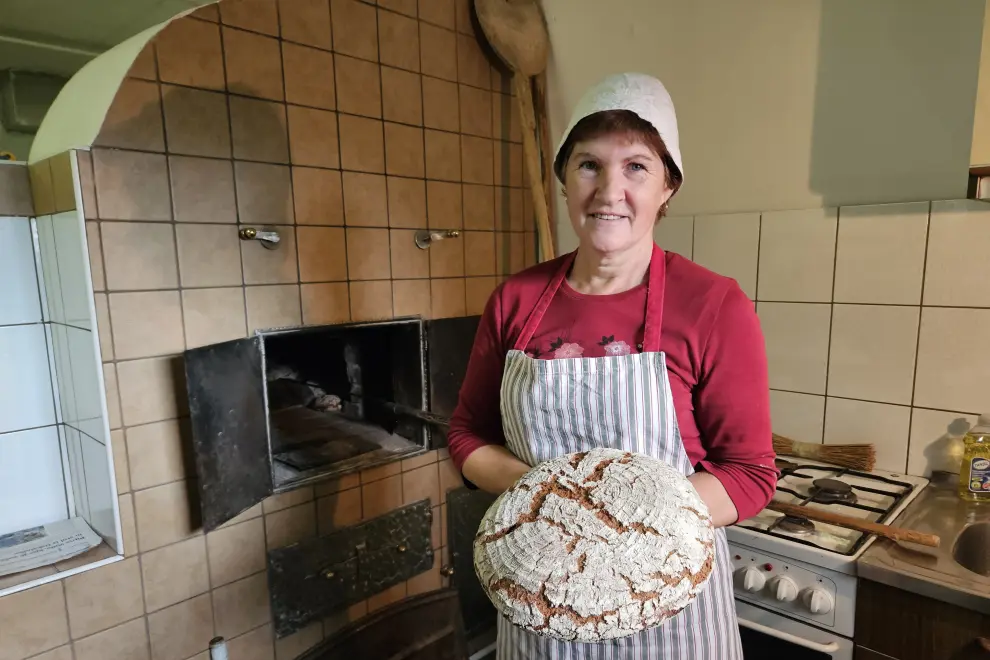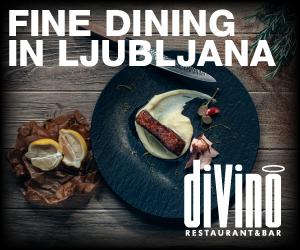More than just bread
Few things are more characteristic of Koroška, the hilly northern Slovenian region, than rye sourdough bread, a firm and hearty type of bread that keeps very long and is characterised by its distinct sourness. Since earlier this year it has been inscribed on the national list of intangible cultural heritage.
The key to the Koroška rye bread is the dry sourdough starter. It is a simple concept: Each time the bread is made a small ball of dough is left behind. A handful of flour is added and the dough is left to dry.
The next time a new batch of bread is made, which can be in a week, two weeks or even later, the dry sourdough is hydrated the night before with warm water, sometimes a bit of sugar is added as well to activate the yeast.
The wet starter is then left overnight and the next day it is mixed with rye flour, a bit of strong wheat flour, and water to produce a new batch of dough.
Keepers of tradition
Koroška rye bread is popular throughout the region but the tradition is mostly kept alive at the many mountain farms, where the bread is often baked in special bread ovens that can fit a dozen or more round loaves at once.
Manja Pešl lives on a farm at an altitude of almost 1,000 metres overlooking Dravograd and is a member of the Dravograd Club of Women Farmers. The club occasionally organises workshops and at a recent workshop run by Pešl, 17 loaves of bread were made.
 Manja Pešl from the Brajel farm with a loaf of freshly baked Koroška rye sourdough bread. Photo: Vesna Pušnik Brezovnik/STA
Manja Pešl from the Brajel farm with a loaf of freshly baked Koroška rye sourdough bread. Photo: Vesna Pušnik Brezovnik/STA
Pešl says she learnt to bake first from her mother and later from her mother-in-law. She has been making Koroška rye bread for thirty years. "Baking bread is a living process, there is something different every time and I am still learning," she says.
Slow and steady
Making enough loaves to fill up the entire oven used to be laborious. Now, the 22 kilo of rye flour and three kilo of wheat flour is mixed in about ten minutes. The process nevertheless still takes time.
After mixing the dough is left to proof for about an hour to double in size, during which time the wood-fired bread oven is preheated. After an hour the dough is portioned into loaves and put into well dusted proofing baskets for another round of proofing.
Once the proofing is completed, the loaves are transferred to the oven with a long wooden peel, where they bake for an hour until they develop the characteristic dark brown colour.
Elevated to Koroška food Pantheon
Local clubs and the Koroška Regional Museum have spent years working towards the inscription of Koroška rye bread on the national list of intangible heritage. One of the people who spearheaded the project is Brigita Rajšter, an ethnologist who has spent thirty years exploring the food heritage of Koroška.
While the women who bake bread have grown up with this tradition and are keeping it alive, the inscription "brings an added awareness that this heritage has now become a value," says Rajšter.
According to her, the bread now has "the highest status in Koroška cuisine" and becoming an indispensable part of menus at restaurants that offer traditional Koroška dishes.
Indeed, the Koroška rye bread has always been special, its role far exceeding that of a mere staple. "Throughout the centuries this food has always maintained the mechanism of blessing. Throughout the entire preparation process it is still blessed to this day," says Rajšter.


